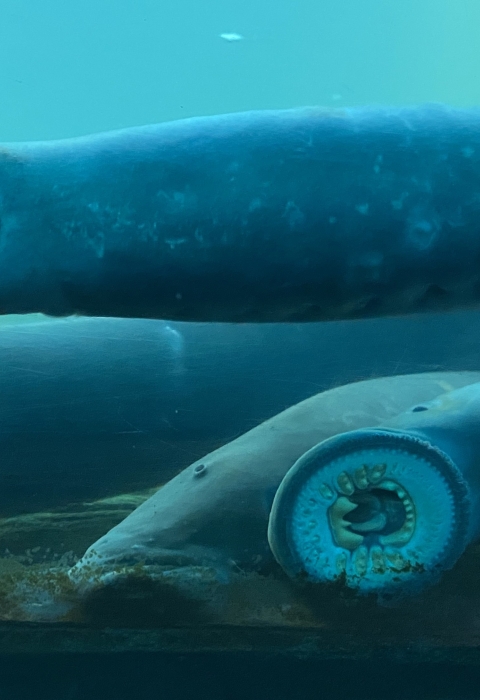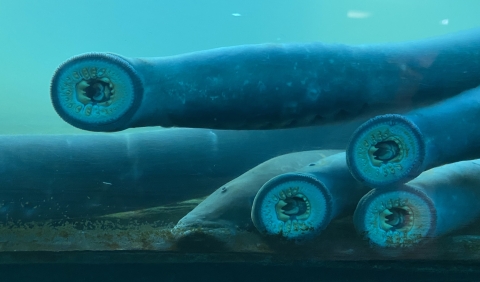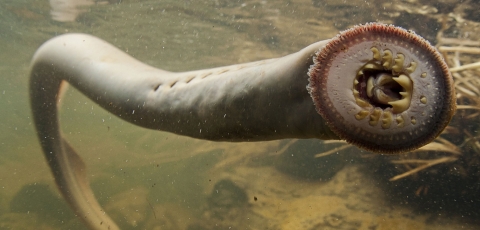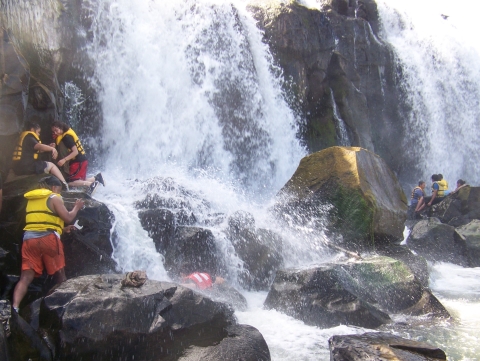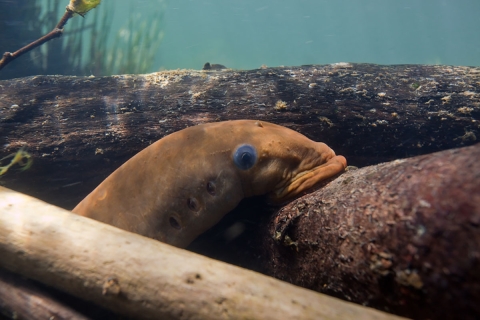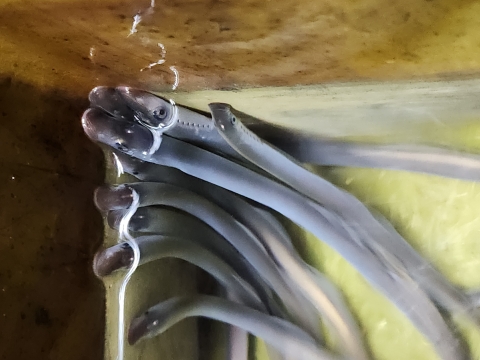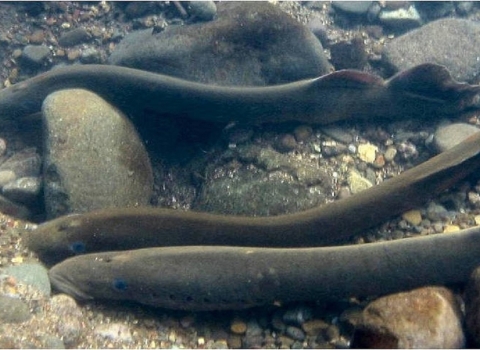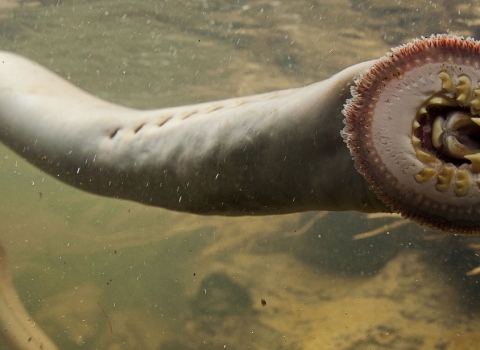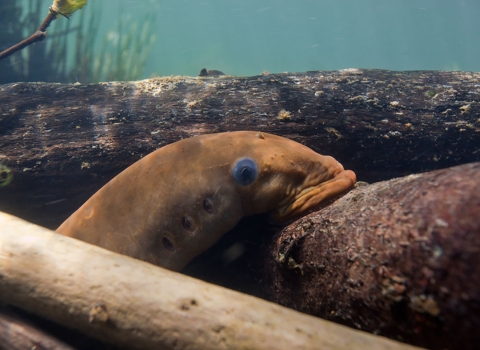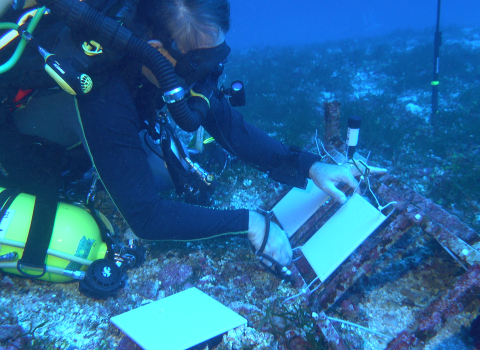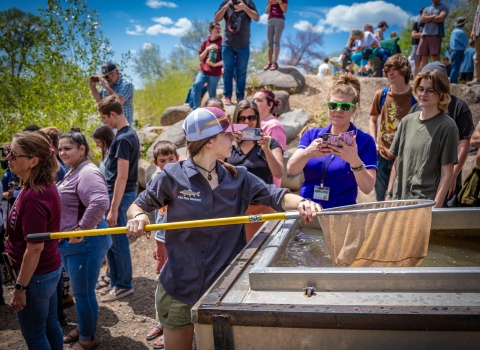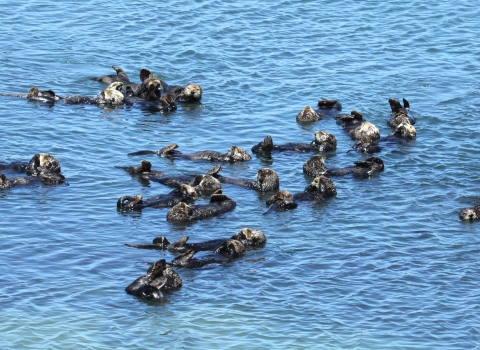Pacific lamprey are misunderstood by many as ugly, scary, dangerous and of little value. But in reality, they carry an important role in the ecosystem and hold deep cultural significance for Native American Tribes. Pacific lamprey are a native and anadromous species — spending their lives in freshwater and to the ocean and back. They, like salmon, face challenges from climate change climate change
Climate change includes both global warming driven by human-induced emissions of greenhouse gases and the resulting large-scale shifts in weather patterns. Though there have been previous periods of climatic change, since the mid-20th century humans have had an unprecedented impact on Earth's climate system and caused change on a global scale.
Learn more about climate change , passage barriers, habitat destruction and nonnative species, and we work with many others to conserve them. Don’t let your first impressions ruin the chance to get to know them!
Pacific lamprey expert and Deputy Project Leader Christina Wang from the Columbia River Fish and Wildlife Conservation Office is here to shed some light about what’s really going on behind all of those teeth.
1. Pacific lamprey are “vampire fish”.
MYTH! — Like a good parasite should do, they don’t often kill their host.
Pacific lamprey are often described as vampire fish because of their feeding strategy. They are parasitic on other fish and marine mammals, but like a good parasite should do, they don’t often kill their host. Lampreys use their suction mouth to attach to their host and suck out blood and body fluids until they are full. Then they drop off and the host swims on their way.
2. Pacific lamprey are dangerous.
MYTH! — They are far offshore and deep, looking for more tasty prey than you.
Pacific lamprey are not dangerous! Because of their parasitic lifestyle, people often think they will be the lamprey’s next host. I challenge you to find a Pacific lamprey while you are swimming in the Pacific Ocean. They are far offshore and deep, looking for more tasty prey than you. When they return to freshwater to spawn, they are not eating anymore. So, the stream behind your house is safe for wading and swimming!
3. Pacific lamprey are invasive species.
MYTH! — Pacific lamprey are native and have co-evolved with their host species for millennia. They belong here!
Sea lamprey and Pacific lamprey are two different species. Sea lamprey are native to the Atlantic Ocean and rivers and tributaries on the East Coast of the U.S., but they are invasive to the Great Lakes. Pacific lamprey are native to the Pacific Ocean and rivers and tributaries on the West Coast of the U.S. Many people seem to know about the sea lamprey invasion in the Great Lakes and confuse them with native Pacific lamprey, assuming they are also a nuisance species.
4. Pacific lamprey are not good to eat.
MYTH! — They are delicious!
Not only do people enjoy eating Pacific lamprey, but they are also a very calorie-rich food and an important part of the food web. Pacific lamprey have at least 40 documented predators — juvenile lampreys are eaten by fish and birds, and adults are eaten by fish, birds and a variety of marine and terrestrial mammals. Pacific lamprey are actually preferred by predators over salmon because they are higher in fat and calories.
5. Pacific lamprey are culturally significant.
TRUE! — Pacific lamprey are incredibly important to Native American Tribes.
Native American Tribes have harvested Pacific lamprey since time immemorial. Pacific lamprey are used by Tribes for subsistence, at ceremonial tables and for medicine. The Tribes typically prepare them by smoking, drying or grilling. They are considered a first food, a traditional native food with a tie to Tribal identity and ceremony. Tribal people talk about Pacific lamprey being a part of their family and elders who must be respected. Families teach their children about the importance of Pacific lamprey and how to harvest and prepare them, and this information is passed from generation to generation. Tribes feel they have a responsibility to care for lamprey since they have been on the Earth for so long, and the Service has a Tribal Trust responsibility to help conserve Pacific lamprey.
6. Pacific lamprey have no jaws and many teeth. And they can climb with their mouths!
TRUE! — Pacific lamprey belong an ancient group of fishes that developed before jaws did!
Pacific lamprey make the most of their jawless anatomy and use their suction mouth to eat, swim along the river bottom, climb and spawn. Surrounding that wonderful and useful mouth are rows and rows of teeth. They use them for attachment to their hosts and are replaced as they wear down, just like shark teeth.
Pacific lamprey also have a very unique skill that other lamprey don’t have — they can climb vertical surfaces using their suction mouth. They can climb natural barriers such as waterfalls, which allows them to move upstream to good spawning habitat. The Service and partners in Pacific lamprey conservation are using this special ability to inform the creation of passage structures that help lamprey climb up and over passage barriers. All they need is a little trickle of water and up they go!
7. Pacific lamprey are in decline.
Unfortunately TRUE — Pacific lamprey have declined in abundance and distribution throughout their range in the U.S., which is Alaska to Southern California.
Because they migrate from freshwater streams to the ocean and back to freshwater, passage barriers are a primary threat for Pacific lamprey. Poor habitat conditions, non-native predators and climate change are other threats impacting them, too. The loss of Pacific lamprey from their historical places is devastating for Tribes who depend on them for food and cultural traditions. The Service is a partner in the Pacific lamprey Conservation Initiative, a collaboration of Tribal, federal and state partners working together to conserve and restore Pacific lamprey.
8. Lampreys are ancient.
TRUE! — Lamprey species have been on the Earth for hundreds of millions of years.
Longer than trees and dinosaurs! They have lived through several mass extinction events, the worst wiped out 96% of all marine species, but lampreys survived. Lampreys have a skeleton made of cartilage, so they are hard to find as fossils; however, in 2006 a fossilized lamprey was found in South Africa and dated to 360 million years ago! This was not a Pacific lamprey, but Pacifics are relatives of these ancient species. The body shape of the lamprey fossil found in South Africa was very similar to the current body shape of Pacific lamprey. Lamprey species are incredibly resilient and very crafty to have survived on the Earth for so long! They have a lot of strategies that contribute to their adaptability and survival: cryptic coloration, long larval stage, and wide dietary versatility.
9. Pacific lamprey bites are shaped like smiley faces.
Enough said.
10. Pacific lamprey are awesome.
TRUE! “How do we let something that has been on the Earth for so long go extinct?” — Elmer Crow, Jr., Nez Perce Tribal Elder
Pacific lamprey are beautiful, important, amazing fish that deserve our respect and help. Tell your friends and get involved! www.pacificlamprey.org
